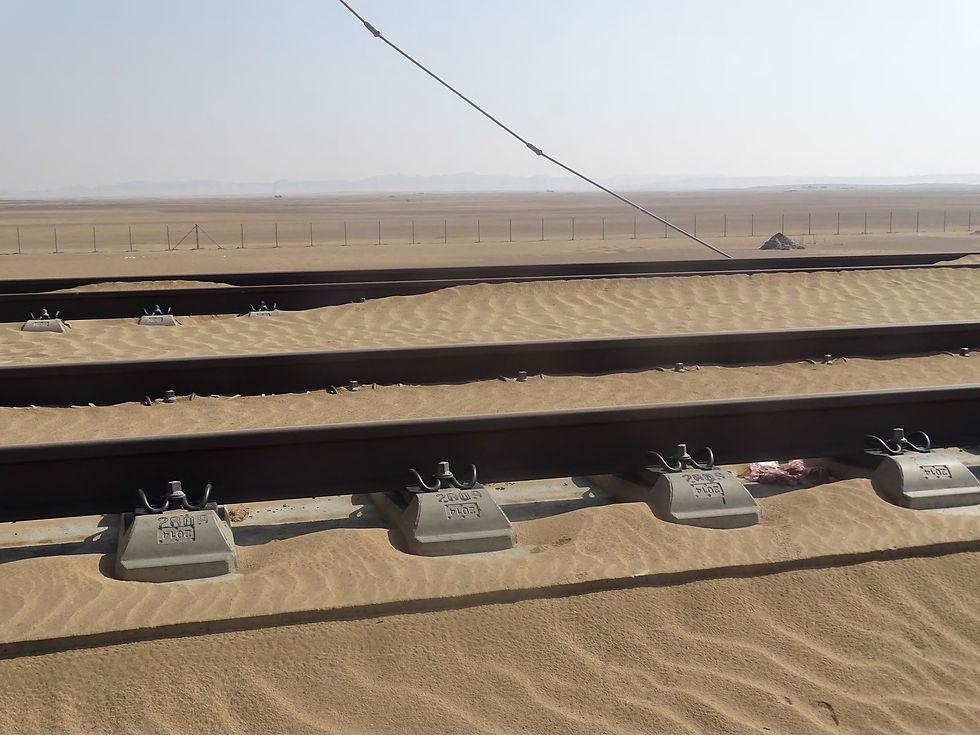
It consists of a sequence of screens, each of which including a vertical plane facing the winds and connected to a horizontal plane secured in the ground. The set formed in this way resembles the capital letter L.
The horizontal base is able to contain a mass of soil that is used to stabilize the wind thrusts.
Some holes are drilled in the horizontal base to enable the discharge of the soil mass in the event of disassembly. As a consequence of the creation of these gaps, a flap is formed in each of them which, if oriented and secured in the ground, will serve as a brake on the possible displacement of the system by the wind thrusts (FIG 3).

La obra se encuentra dentro de la valla de la línea de tren, en la obra está teniendo lugar una acumulación moderada de arena, ocasionando cortes en la línea del tren y causando un efecto significativo tal y como se muestra en la siguiente fotografía.


Se puede observar que el área protegida por Sand Trap y una vez realizada la limpieza de la vía la mes de su instalación por la empresa M / S COPASA ARABIA. Se puede apreciar la nula o escasa presencia de arena en las vías del tren transcurridos tres meses desde su limpieza.

La obra se encuentra dentro de la valla de la línea de tren, en la obra está teniendo lugar una acumulación moderada de arena, ocasionando cortes en la línea del tren y causando un efecto significativo tal y como se muestra en la siguiente fotografía.
In order to increase the capacity of the sand protection system, some pits are dug in front of the screens (FIG 3). The result of the excavation is used to load the screens of soil on its horizontal plane. The trench thus formed serves to capture part of the wind-borne sands.
When the accumulation of sands in the system environment is large enough, the system loses its effectiveness and is disassembled (FIG. 4) as follows:
- The structure is slowly raised using the rings and letting out as much soil contained in its horizontal base as possible. The action of emptying the structure of soil is completed by overturning the whole construction.
- The sand accumulated is spread in the same place, creating a new level regarding the initial level and the screen is located in the same place (FIG 5).
The assembly formed in this way has greater height compared to the initial level.
The trench is dug again in front of the screen and the horizontal base is loaded with the excavation remains so that the system becomes operational again.
